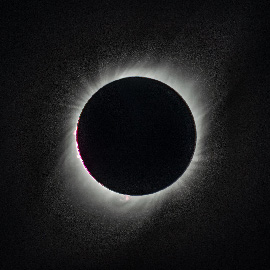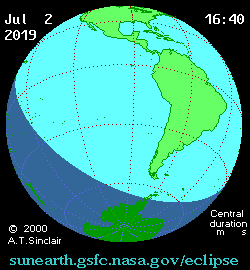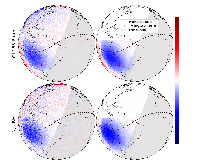
This campaign focused on the July 2, 2019 total solar eclipse visible across the South Pacific and southern South America. Total Solar eclipses are events that offer unique science opportunities. For example, observing the lower corona of the Sun with optimal conditions that cannot be achieved with coronagraphs; investigating how the Earth's atmosphere responds to the Sun's output; and measuring cosmic rays without the Sun as the source.


Virtually all solar observatories in space and on the ground supported the solar eclipse. Several eclipse teams took multi-wavelength images and spectroscopic measurements of the solar corona. SOHO/LASCO had a special observing plan that included observations in polarized light (pB) during the eclipse and at several times before and after the eclipse. Hinode ran a program to observe polar plumes (HOP 0376).

GOLD makes regular day-time (full disk), limb, occultation and night-time measurement at different cadence. For eclipse observation, the day disk imaging of the OI 135.6 nm and N2 LBH band emission brightnesses was used. To generate full disk day images ("normal mode"), scans were made from east to west starting on the eastern limb of the Northern Hemisphere and ending at the western limb of the Southern Hemisphere. Northern and Southern hemisphere scans were made separately at a cadence of ~ 15 minutes each and a spectral dispersion of 0.04 nm/px. The data counts were then converted to radiance in Rayleighs (R) per nanometer. Integrating the radiance over the wavelength range of desired emission feature gives the brightness in R (1R = 1010 photons m-2 s-1 steradian-1). In addition, as the eclipse was predicted to be confined to the south-west quarter of GOLD’s FOV, the second channel on GOLD was used to observe only this region. The cadence of this special observation mode was kept identical to the “normal mode” operation (~ 30 minutes). Thus the integration time at one particular scan was four times longer. For both "normal" and the "special" modes, identical measurements on June 30, 2019 were used as baselines.